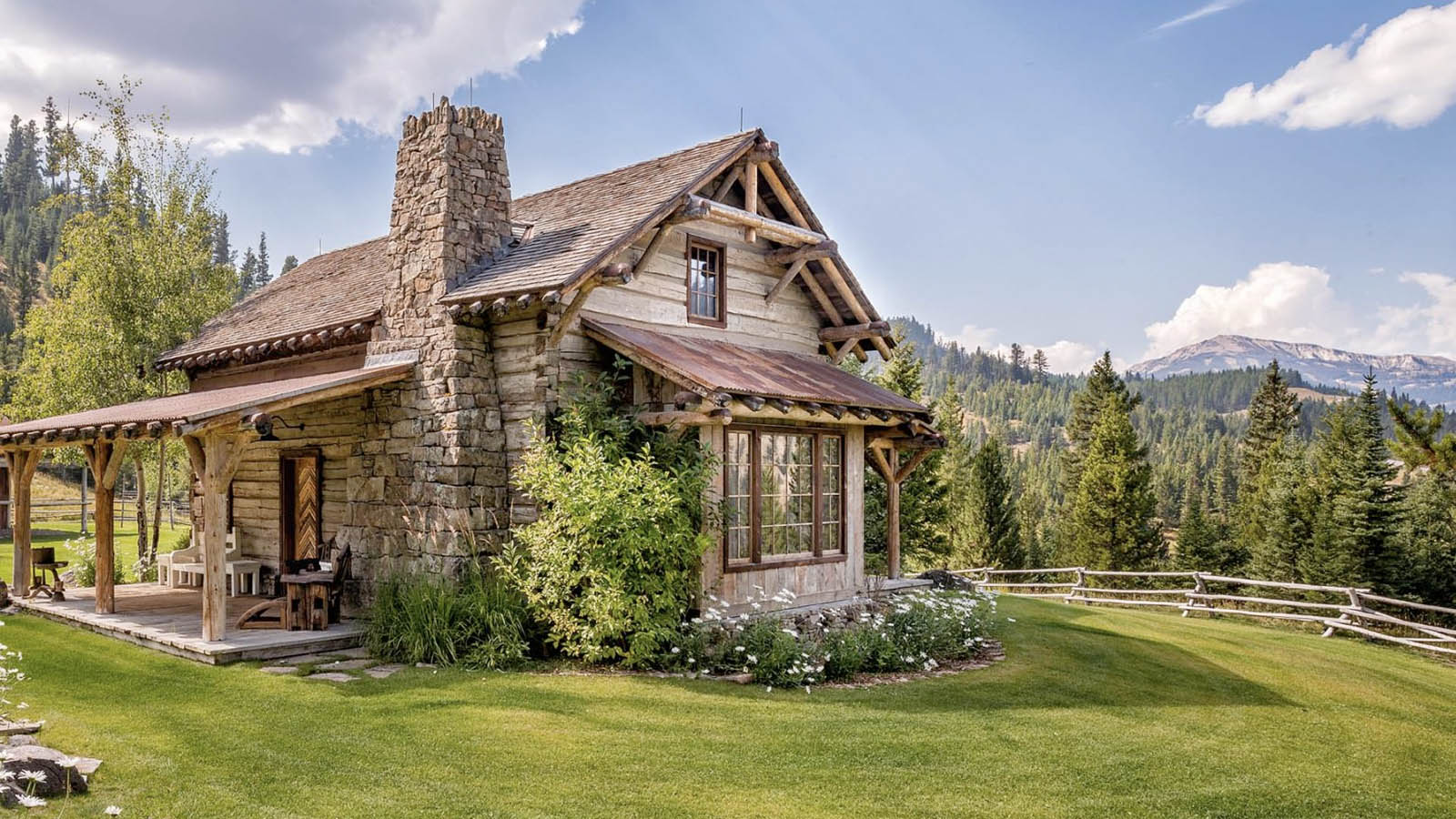By Emily Stifler Wolfe
On a normal year, spring is slow in Big Sky. The resort is closed from late April to June, seasonal workers leave town, and many business owners and residents decamp to Moab, Mexico and beyond. It’s mud season, and the rivers are too high to fish. The real estate market, likewise, slows down. Except this year, it didn’t.
The area had been positioned for a record year of real estate sales, according to Martha Johnson, a founding broker and VP of Sales at the Big Sky Real Estate Co. But when Big Sky Resort closed more than a month early on March 15 due to the coronavirus, many prospective buyers had to leave or cancel plans to visit. The market went into what Johnson described as “a pause” through April, but neither that nor the off-season lasted long.
“The phones started ringing in May, and things picked up dramatically—more than any other historical season,” Johnson said over the phone, as she and her son moved furniture for a client who’d sold his home in early June. Johnson has lived in Big Sky for 32 years and is the exclusive listing agent at the private Spanish Peaks Mountain Club. She says the nature of the inquiries is different now than in the past.
“In the luxury market, more than half my phone calls are for people looking to buy and live here year-round. They’re shifting from investment properties to second homes or primary residences. They want to move here from New York City, Chicago, L.A., San Francisco. Those are my calls.”
While Big Sky’s rugged peaks and clear, freestone rivers have long drawn diehard skiers, anglers and outdoor recreationists, a demographic shift has been underway for the last decade-plus, as new development brings with it improved amenities and infrastructure to support a growing year-round population that’s surpassed 3,000. Since 2009, Big Sky has gained an International Baccalaureate high school, a private Montessori school, a hospital and a performing arts center that draws international talent. New boutiques, restaurants and hotels appear every year. There’s a farmer’s market, a free summer concert series, a movie theater and an award- winning Professional Bull Riding event.
The combination of so many people working from home during the national shutdown (62 percent of employed Americans in April, according to a Gallup poll) plus Montana recording the fewest confirmed cases of COVID-19 in the country, may mean the virus speeds the area’s growth, feeding the momentum spurred by those capital improvements.
“I think this whole thing is going to be an accelerant for how people work and where people work and how people are educated,” said Bill Collins, director of sales at the Yellowstone Club, a private community in Big Sky. “People have found, by and large, that they can successfully work from home.”
After the Yellowstone Club’s ski resort closed in mid-March, around 120 member families chose to stay in their homes, Collins said. And while sales there also paused in April, Collins noted they didn’t lose any ongoing deals or see distressed property sales because of the pandemic and subsequent shutdowns. Since June 1, when the 14-day quarantine for out-of-state visitors lifted, the club has been “very active doing deals,” with numbers similar to last year. “We’ve had slightly fewer transactions, but higher price points and we’re anticipating a really busy summer based on our demand. … People are like, ‘Where do I want to raise my kids? Where am I safest? Where am I healthiest?’”
Already, the answer to those questions for more and more people was southwest Montana.
An hour north of Big Sky, the university town of Bozeman has been the fastest-growing city of its size in the country for the last four years, complete with a burgeoning tech sector, a thriving arts scene and direct flights to 22 cities. So, it should come as no surprise that a report commissioned by the Big Sky Chamber of Commerce in 2019 found that the community’s population grew 21 percent between 2015 and 2019. That’s three times faster than Aspen, Colorado, or Ketchum, Idaho, and five times faster than Jackson, Wyoming, during that time, according to the report.
Carolyn Cole, a real estate agent with Engel & Völkers Big Sky who moved here in 2018 from Connecticut, said as of early June, her clients were interested in buying soon, as cities continued to mire in shutdowns and unrest.
“During the stay-at-home order, people were out mountain biking and [hiking] here in Big Sky,” Cole said. “We had that luxury, versus being in New York City not wanting to get into an elevator on the 14th floor of an apartment building. … Everybody is interested in buying in the short term—within a year. If things go bad or get worse, this is an awesome place to be. Open space is the new luxury.”
Inventory, which has been limited for the last several years, was nearly the same in the single-family market as compared to last year, with 34 new listings between January and May, as compared to 33 in 2019. Condo/townhouse market inventory, however, was down 14 percent, according to stats from the Gallatin Association of Realtors, which don’t include Yellowstone Club data. The year- to-date median sales price was up 10 percent to $1.83 million for single-family homes, and down 2 percent for condos and townhouses, to $480,000.
It’s the first time since the 2008 crash that home and property values in Big Sky have approached their pre-Great Recession height, and the economic landscape is different this time around. In the years leading up to the 2008 crisis, bad loans, appraisal fraud and house flipping were occurring in Big Sky, as they were elsewhere in the country, with properties sometimes exchanging hands multiple times before they were even constructed.
“That was indicative of the time,” said Eric Ossorio, managing broker for Engel & Völkers Big Sky, who’s been in Big Sky for 28 years. “[In 2008], people were just buying things like they were yanking toilet paper off the shelves at Costco [this past winter]. That was a sandcastle. That was not a market built on a strong foundation… We have a much stronger foundation now, due to better lender oversight and a number of properties that are being sold for cash. People want to be in a place like this, so this is where they’re putting their money.”
After the crash, the Boston-based investment firm CrossHarbor Capital Partners bought the Yellowstone Club out of bankruptcy in 2009, and partnered with Boyne Resorts, which owns Big Sky Resort, to purchase the area’s other two private residence clubs, Moonlight Basin and Spanish Peaks, in 2013. CrossHarbor has developed, constructed and sold more than $3.13 billion of real estate in the area, and through its affiliate, Lone Mountain Land Company, it has invested millions into public and private infrastructure, as well as community services including affordable and employee housing. Each of the clubs also has a community foundation, and together they give around $1 million annually, as of 2018, to support public education, community health, food security, conservation, the arts and other services.
This kind of support is crucial for Big Sky, an unincorporated community with no local government, that’s instead managed by a group of special districts, homeowner associations and nonprofits.
Boyne, too, is investing in upgrades. From a $13 million renovation of the base area hub to adding new ski terrain and mountain bike trails, and with a massive upgrade to the chairlift system in progress, the plan to transform Big Sky into a world- class, year-round destination by 2025 is well underway.
Deemed essential in Montana, construction and real estate continued through the shutdown: The Montage Big Sky, a $400 million, five-star hotel and residence in Spanish Peaks, is still scheduled to open in 2021, and a new $20 million community center broke ground this spring in the Town Center, along with numerous residential construction projects.
Big Sky is a little over halfway built out, according to Tallie Lancey, a broker with Big Sky Sotheby’s International Realty. Given that it is, in a sense, an island of developable property surrounded by public land, supply is a finite resource. Though, being earlier in its life cycle than other world-class mountain resorts like Jackson or Telluride, entry points will always be less expensive than those found in veteran competitors, Lancey said.
Even so, Lancey discourages clients from buying into Big Sky solely as a monetary investment. She cut her teeth on foreclosures and short sales here during the Great Recession, when Big Sky, itself, was also coming of age. She has since brokered the two highest dollar residential transactions in Big Sky outside of the Yellowstone Club, notably closing on the more expensive of the two during March’s shutdown.
“[When] people ask if prices are going to come down, I say, ‘I don’t know. But ask yourself this: Do you want to buy in Big Sky before or after the Montage opens its doors, before or after [the Swift Current Chairlift] gets replaced with a 6-person high- speed bubble, before or after the pedestrian tunnel goes in and connects our two parks, before or after the community center gets built, or the water and sewer gets an upgrade?’ And then they go, ‘Oh! Before.’”
Lancey, who studied philosophy in college, says she often wonders what constitutes a good investment. “Does it mean your asset appreciates, or your lifestyle improves? The fundamentals are the same.”








